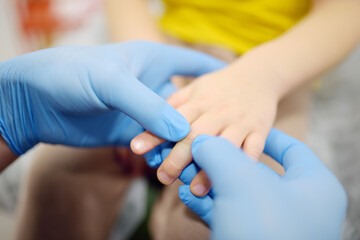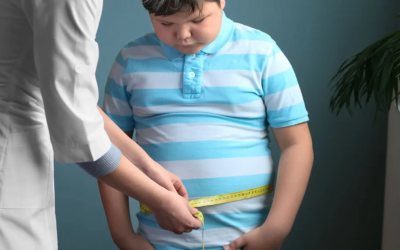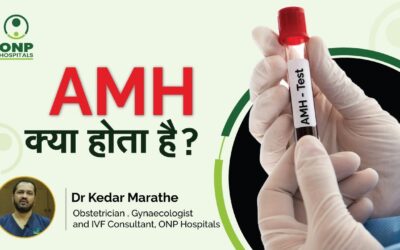As a pediatrician at ONP Hospitals, I’ve witnessed countless stories of resilience and recovery, but one case stands out—little Anaya’s story. Anaya, a spirited four-year-old, came to us after a severe finger injury that happened while she was playing in the backyard....
How to Increase Endometrial Thickness for IVF?

Uterine (or endometrial) lining thickness is an essential predictor of IVF; embryo (fertilized egg) implantation and pregnancy success. If one of your recent IVF cycles failed, the endometrial thickness can be a reason.
In this case, it is crucial to understand this topic and how it affects your pregnancy chances in an IVF procedure. This blog covers details about the importance of Endometrial Thickness and how you can increase the same.
What are Endometrium and its role in Pregnancy?
Before understanding endometrial thickness, let’s understand some basics about endometrium and its role in pregnancy.
The endometrium is just another term used for the lining of the uterus. As part of the menstrual cycle, the body prepares the endometrium each month. It gets thicker to allow the embryo to implant successfully and receive the nutrition it needs. Followed by implantation, the endometrium gets wider as the pregnancy progresses.
Doctors measure this thickness with ultrasound during cycle monitoring in IVF. Only if you have abnormal positioning of the uterus or any other health condition, an MRI would be used.
Uterine lining thickness varies depending on the phase of your menstrual cycle and hormonal levels. Below is the thickness of endometrium commonly observed
- During your period: 2-4mm
- Before ovulation: 5-7mm
- During ovulation: 7-11mm
- After ovulation: up to 16mm
In IVF, lining less than 8mm is associated with implantation failure and low pregnancy rates.
What Is a Good Endometrial Thickness for IVF?
The ability of the endometrium to easily implant the embryo is regarded as a key factor in the success of IVF. This depends on the endometrial thickness which is an essential marker of a favorable outcome that you can achieve with IVF. An optimal endometrial thickness of 10 mm or more is ideal for IVF. Having an endometrial thickness between 8 to 10mm increases the rate of live births and reduces pregnancy loss.
How to Increase Endometrial Thickness by Food?
After hearing this complex term “Endometrial thickness,” you might think that taking medications prescribed by the doctor is the only option to increase its size. You may feel discouraged if you do not respond to these medical treatments.
Don’t worry, as natural alternatives like a nutritious diet have an immense impact on this. So, if you want to thicken your uterine lining, here are some superfoods that may help you:
- Eat more whole grains, including dark, seedy bread, brown rice, quinoa, and even popcorn. Whole grains are power-packed foods rich in carbohydrates, protein, fiber, vitamins, and antioxidants. If you increase your intake of whole grains, greater will be your chance of implantation after IVF. Some experts say that for every additional serving of whole grains per day (i.e. at least 48 grams/day), the uterine lining is increased by an average of 0.4 milmillimeters
- Eat oily fish: if you are into seafood, eat oily fish 2 to 3 times every week. Oily fish is one of the best sources of omega-3 fatty acids that are great for improving blood flow to the uterus, which is essential for thickening your endometrium.
- Consume more fruits like lemon, lime, orange, pomegranate, watermelon. Do you know what these fruits have in common? They produce nitric oxide. This nitric oxide causes the widening of your blood vessels to deliver more blood to your uterus to build up that lining.
- Consume foods rich in Vitamin E: Vitamin E is an essential nutrient found in nuts (almonds, peanuts), seeds (sunflower seeds, soybean), fruits like mango an,d vegetables (beetroot, avocado, spinach, etc.,), which may affect your uterine lining.
- Eat foods containing L-arginine: this naturally occurring compound is found mainly in protein-rich foods like fish, red meat, poultry, soy, and dairy products. This compound is known for opening blood vessels to improve blood flow to the uterus, which remarkably increases the thickness of your uterine lining.
Conclusion
If you are trying to get pregnant with IVF, paying attention to your endometrial thickness would be the best way to increase your chances of successful conception. Eating a nutritional diet including these superfoods will help you support your endometrial lining growth. When everything fails, remember that lifestyle modification can make a huge difference. Simple strategies like drinking at least 2L of water daily and following a workout regime, including stress-relieving activities like yoga, can increase your pregnancy chances.
If you are worried about having a thin uterine lining, then consult our fertility expert to get the right guidance to achieve ideal endometrial thickness. You can book an appointment with our experts to know the best treatment in your case.
About Author
More Blogs
Addressing Childhood Obesity: Preventative Measures and Healthy Lifestyle Choices
Childhood obesity is growing concern. More kids...
Healthy Sleep Habits for Children: Tips for Parents
Good sleep is essential for children’s health...
The Role of Diet and Nutrition in Managing Encopresis in Children: Insights from Dr. Amita Phadnis
Encopresis, a condition characterized by...
Videos
Dr. Amita Phadnis’s Full Speech on Survival & Health Rights at UNICEF India.
Dr. Amita Phadnis ,M.D., Gave a Motivating Speech
Breast cancer is cancer that forms in breast cells. Women are mostly diagnosed with this cancer. Although it can be seen in both men and women
What is AMH
The granulosa cells in your ovarian follicles create the anti-Mullerian hormone, often known as AMH. According to the American College of Obstetricians and Gynecologists (ACOG), the generation of AMH is a reflection of your ovarian reserve.
FAQ’s
Pregnancy and Migraine Headaches: What Women Need to Know
When you are pregnant or breastfeeding, then...
What Is the Problem of Orthopedics in Children?
While orthopaedic problems are commonly seen in and associated with the elderly, it’s important to be alert regarding the fact that they can afflict young people and children as well.
All You Need to Know About Reproduction
Most science students have to study about reproduction in their high school syllabus, and some learn from their parents, who may discuss it even earlier. It’s a very good thing to know about our own bodies…




 Home
Home Blogs
Blogs



